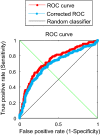A brain-computer interface for the continuous, real-time monitoring of working memory load in real-world environments
- PMID: 32399073
- PMCID: PMC7203264
- DOI: 10.1007/s11571-020-09573-x
A brain-computer interface for the continuous, real-time monitoring of working memory load in real-world environments
Abstract
We developed a brain-computer interface (BCI) able to continuously monitor working memory (WM) load in real-time (considering the last 2.5 s of brain activity). The BCI is based on biomarkers derived from spectral properties of non-invasive electroencephalography (EEG), subsequently classified by a linear discriminant analysis classifier. The BCI was trained on a visual WM task, tested in a real-time visual WM task, and further validated in a real-time cross task (mental arithmetic). Throughout each trial of the cross task, subjects were given real or sham feedback about their WM load. At the end of the trial, subjects were asked whether the feedback provided was real or sham. The high rate of correct answers provided by the subjects validated not only the global behaviour of the WM-load feedback, but also its real-time dynamics. On average, subjects were able to provide a correct answer 82% of the time, with one subject having 100% accuracy. Possible cognitive and motor confounding factors were disentangled to support the claim that our EEG-based markers correspond indeed to WM.
Keywords: Electroencephalography; Machine learning; Neurophenomenology; Real-time brain–computer interfaces; Working memory.
© Springer Nature B.V. 2020.
Figures








References
-
- Allison BZ, Neuper C. Could anyone use a BCI? In: Tan D, Nijholt A, editors. Brain–computer interfaces. Berlin: Springer; 2010. pp. 35–54.
-
- Antonenko P, Paas F, Grabner R, Van Gog T. Using electroencephalography to measure cognitive load. Educ Psychol Rev. 2010;22(4):425–438. doi: 10.1007/s10648-010-9130-y. - DOI
LinkOut - more resources
Full Text Sources

